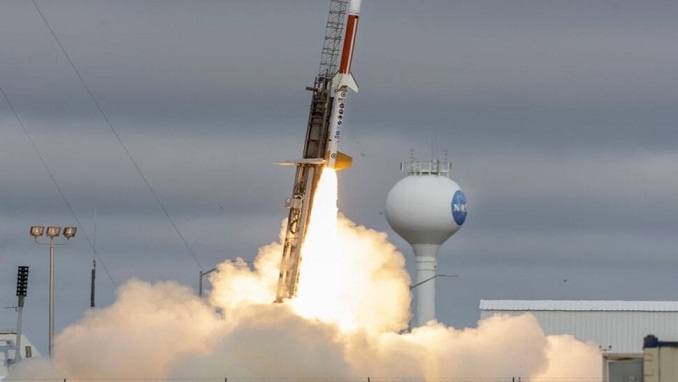
In its efforts to advance the Pentagon’s efforts in the race with Russia and China to develop high-speed weaponry that can evade modern defense systems, the US Navy and Army have allegedly conducted a successful test of hypersonic weapons components and materials on Wednesday.
The Navy said in a statement that the launch of a so-called “sounding” rocket from a seaside launch pad in Virginia successfully tested hypersonic weapon communications and navigation equipment.
During the nearly a dozen hypersonic weapon experiments from NASA’s Wallops Flight Facility in Virginia on Wednesday, Sandia National Laboratories tested advanced materials that can withstand the heat generated when traveling in a realistic hypersonic environment at Mach 5, or five times the speed of sound.
Per the Pentagon report, Wednesday’s tests were intended to validate future aspects of the Army’s Long Range Hypersonic Weapon (LRHW) as well as the Navy’s Conventional Prompt Strike (CPS). The tests also evaluated the hypersonic weapon communications and navigation equipment, the report said.
To complete the latest round of testing, a second sounding rocket will be launched later this week.
The race to build hypersonic weapons between the US and its global rivals has quickened in recent years and Pentagon has additionally picked the pace of the development of the next generation of arms that rob adversaries of reaction time and traditional defeat mechanisms by using a sounding rocket to launch these experiments and prototypes.
By using a smaller and more affordable test vehicle, Pentagon fills a critical gap between ground testing and full-system flight testing since hypersonic glide vehicles glide to a target at speeds of about 6,200 km per hour – more than five times the speed of sound – after their launch from a rocket in the upper atmosphere.
To enable sustained flight at hypersonic speeds, their air-breathing cousins, however, use scramjet engine technology and the vehicle’s high speed to forcibly compress incoming air before combustion.

Be the first to comment